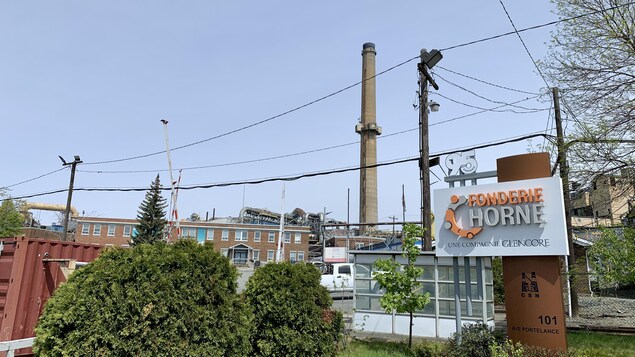We must not forget that our employees are also citizens of Rouyn-Noranda, so we are all concerned about this arsenic problem and we all want to succeed in reducing emissions. We are still very proud, we are the copper production with the lowest carbon footprint in the whole world and with the projects we have, we will continue to improve that
explains Marie-Élise Viger, environmental manager for Glencore.
The VELOX project is going well
Trials on the VELOX project, a pilot plant testing a new copper production process, continue.
” We are in the process of completing the first year of piloting. There is still a lot of data to compile, but one thing is certain, the data so far is still encouraging. »
The analyzes should be completed by early 2023. If the results are conclusive, the Foundry will move forward with the PHENIX project, which would use the new technology on a large scale.
One of the realities of our process at the moment is that we have several copper manipulations required, what we call transfers of copper from one metallurgical vessel to another. One of the great strengths of the VELOX process is the elimination at the source of many of these transfers, so at this point it reduces the generation of fugitive emissions by eliminating at the source this need to transfer copper
adds Mr. Dion.
It is difficult to say, however, how much emissions can be reduced.
It will be good gains, with modeling, we have a percentage of 10 to 40% reduction, on the other hand it is really with the implementation that we will see the gains, explains Marie-Élise Viger.
But will it be possible to reach the provincial standard of 3 nanograms per cubic meter (ng/m3) of arsenic in the air?
Our goal is as low as possible. All the projects will take us lower and we have not ruled out either the buffer zone project with which we would seek the last gains that we could seek to have social and environmental acceptability.
she adds.
Towards an enlarged transition zone?
The Foundry is working on the development of a transition zone between the factory and the Notre-Dame district.
Already, two rows of houses have been demolished to make way for a 6-meter-wide lane with green stripes. Everything is under discussion with the City of Rouyn-Noranda.
Once everything is completed, the emission measurement station will also be moved.
At the moment, people have lower exposure because the people who were most exposed have all been relocated, so we just need to be able to move the station to come and measure the impact of the transition zone.
emphasizes Ms. Viger.
Emissions that do not come from chimneys
The development of this buffer zone was also a recommendation of the interdepartmental committee in charge of studying the action plan proposed by the Horne Foundry to reduce its arsenic emissions.
It must be said that the majority of emissions do not come from the chimneys, but from the site itself.
What we see is that at the nearest station, 0.3% of the emissions are related to chimneys and even moving away, if we go to Laiterie Dallaire, which is our furthest station where we are around 3 ng/m3 [d’arsenic], more than 75% of the emissions do not come from the chimneys, but come from the site. It’s fugitive emissions, roof vent outlets and all that that will bring emissions into the community and that’s why the projects we have are targeting these emissions in the short term to reduce exposure
explains Marie-Élise Viger.
The Foundry team has also equipped itself with new dust collectors, precisely to eliminate some of these fugitive emissions.
The gases are sucked into a large pipe and are distributed to the filter elements of the dust collector. The dust collector acts like a big sweeper, so a powerful fan that really sucks up the gases. And by pushing these gases through a filter, we are able to remove the particles suspended in the air
demonstrates Guillaume Dion.
As work continues on the ground, Glencore executives are currently negotiating their next remediation certificate. The current certification, which expires in 2022, allowed the Horne Smelter to emit up to 100 ng/m3 of arsenic, or 33 times the provincial standard.
– With information from Jean-Marc Belzile
Reference-ici.radio-canada.ca
